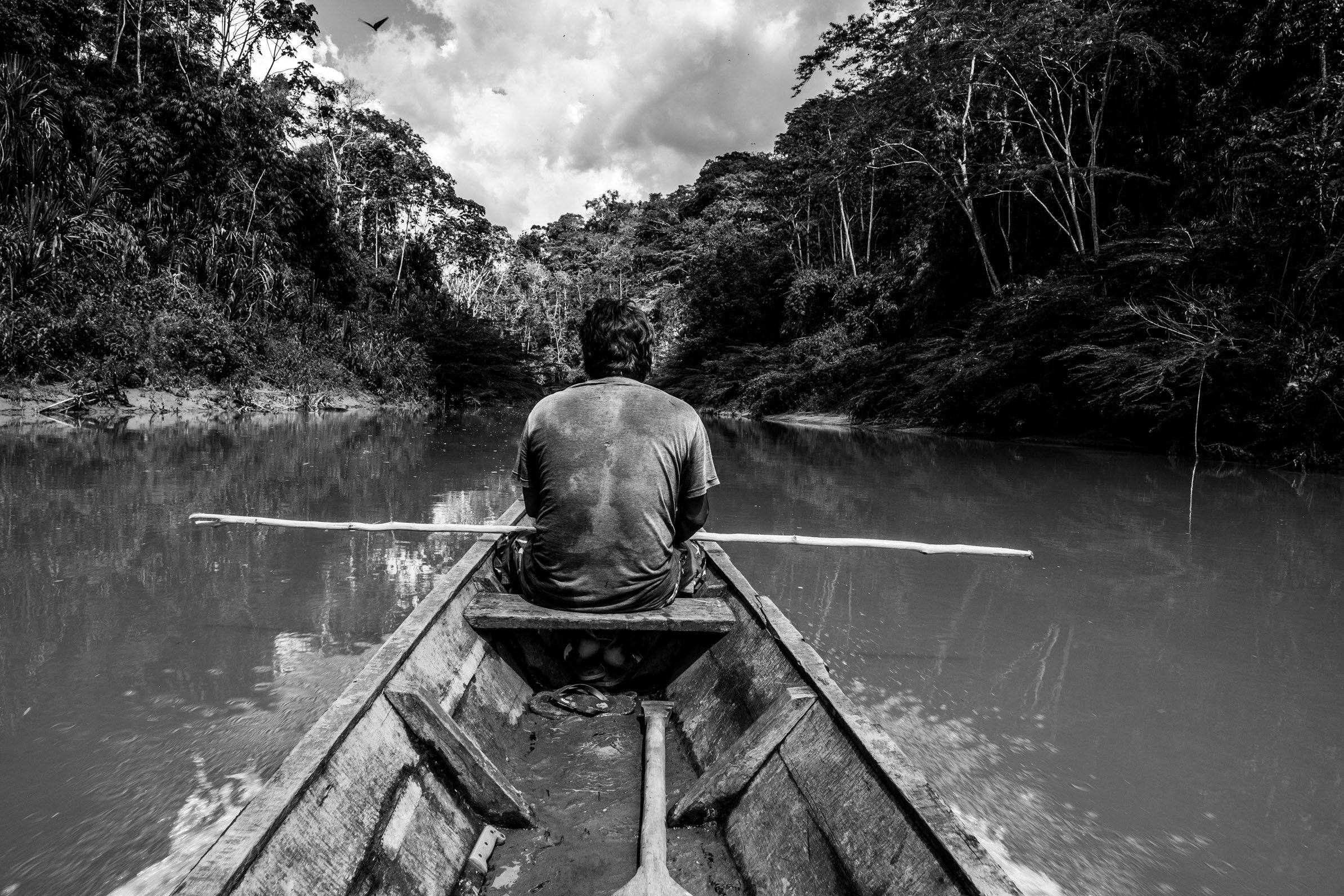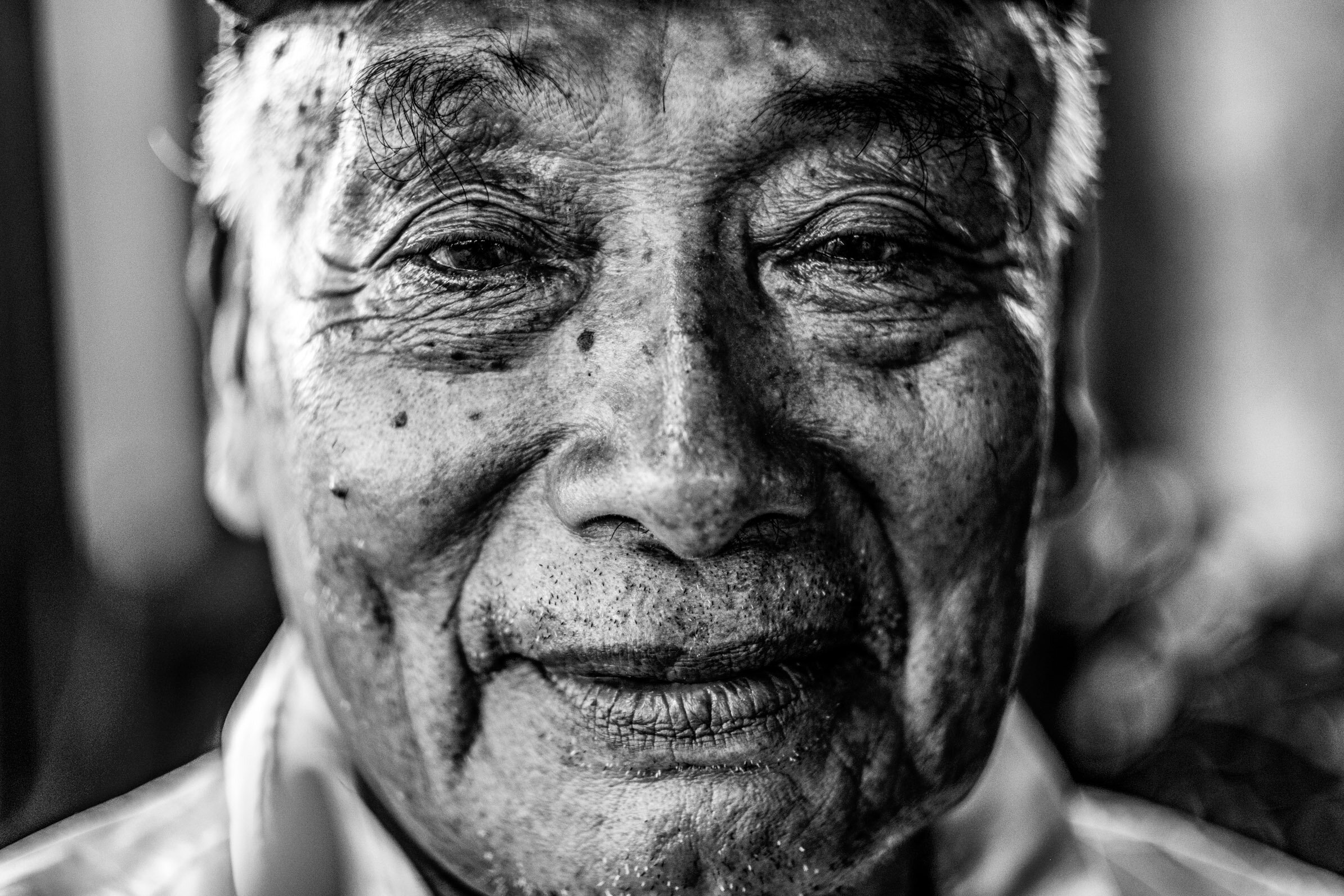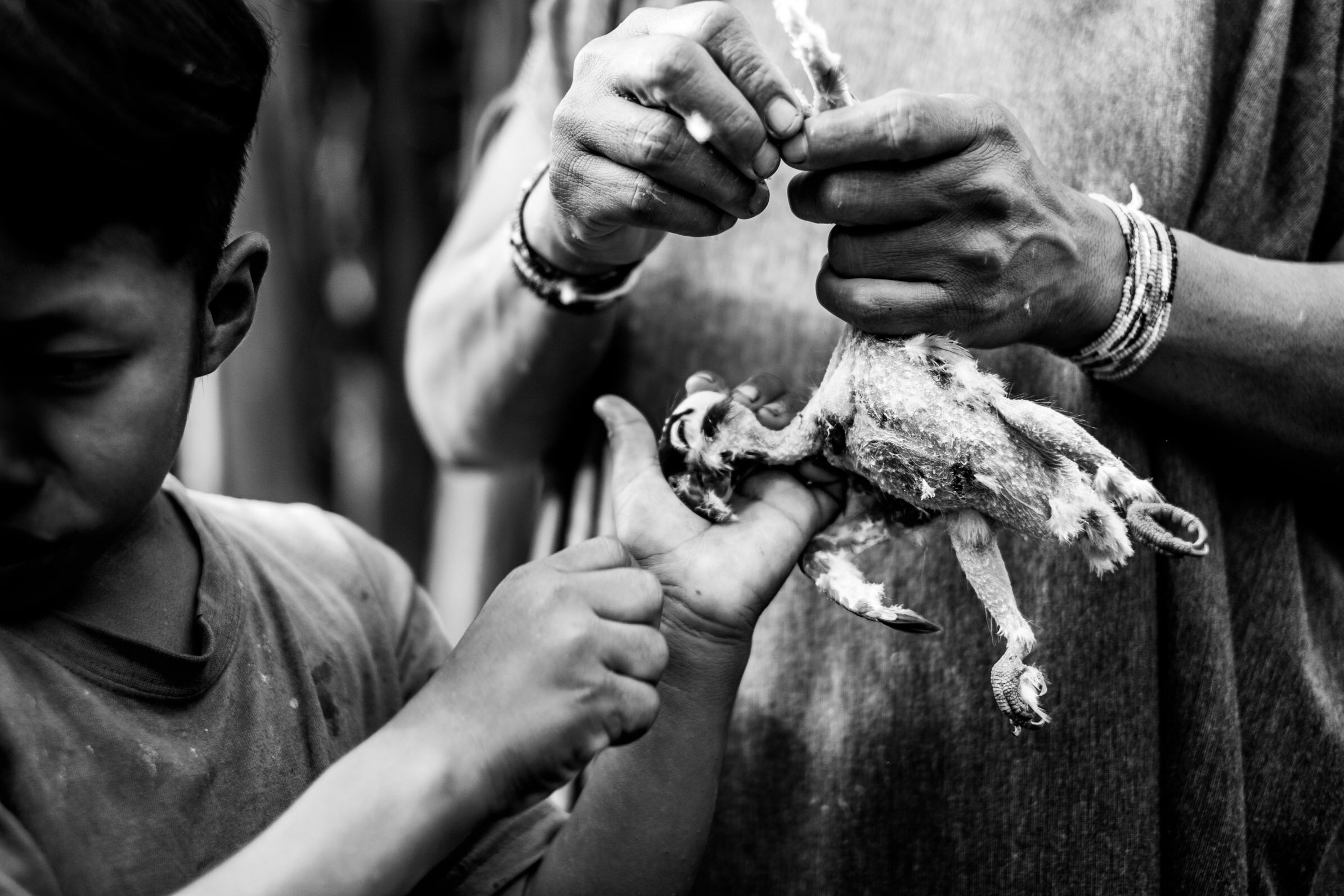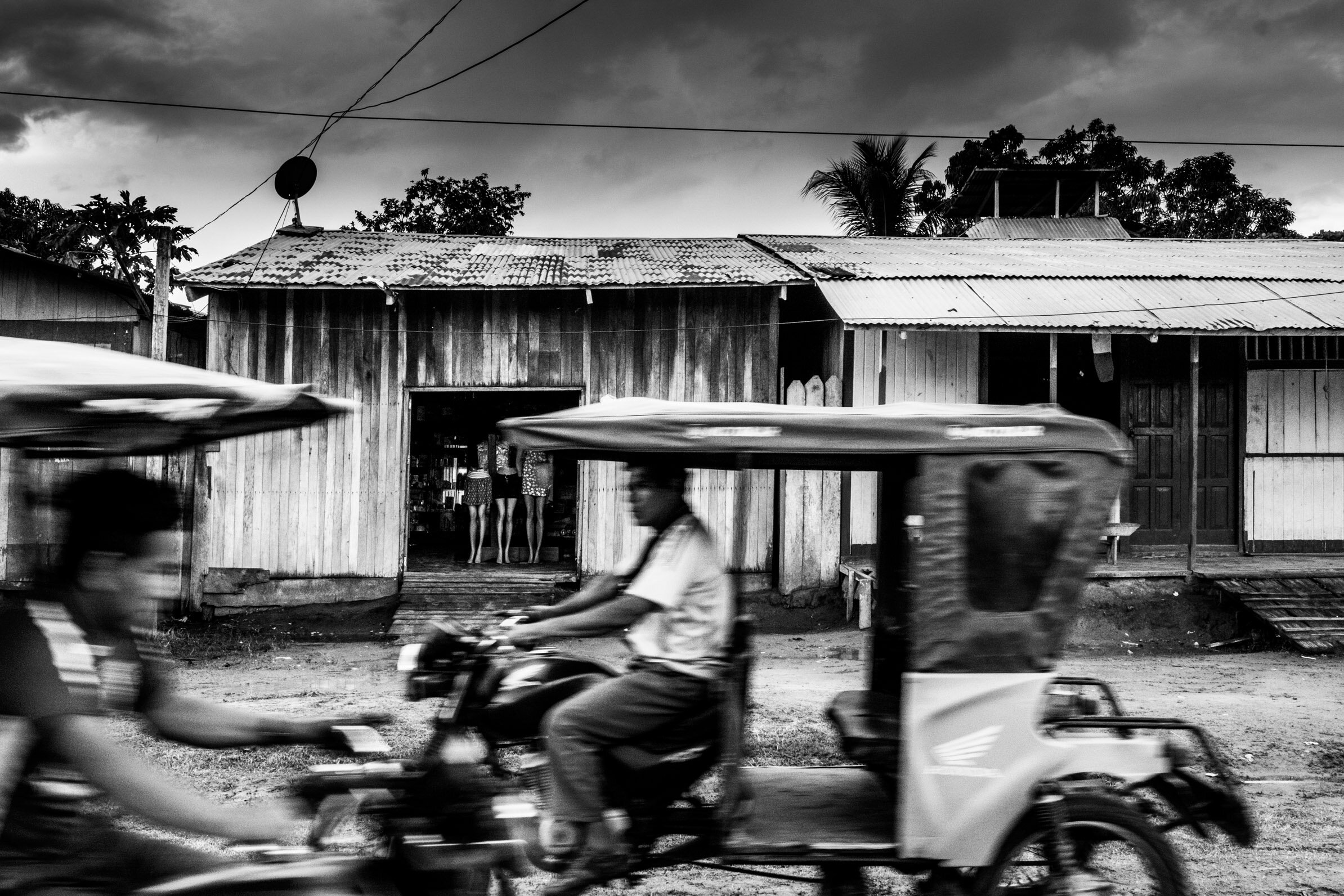
Last Wildest Place: Ongoing Personal Project
LAST WILDEST PLACE is a long-term, ongoing project based on the simple fact: The Amazon Matters. Working regularly with several small NGOs, I have been photographing this globally-critical landscape in the face of the many constantly evolving threats to the unique social, cultural, and environmental fabric of this place.
At over a billion acres, the Amazon Basin is bigger than the next two largest tropical forests combined. It alone accounts for half the planet’s remaining rainforest, 30% of all terrestrial species, 20% of all freshwater, and 20% of the global oxygen. It provides climate stability for the entire planet and the carbon stored in its forests—and released by its deforestation—affects us all.
Within the Amazon, the Purús/Manu region in southeastern Peru is one of the most remote and inaccessible areas, where still-intact and uniquely biodiverse ecosystems provide sustenance for settled indigenous communities and is home to perhaps the highest concentration of isolated “uncontacted” tribes on Earth. While still largely undeveloped, this last wildest place is increasingly threatened by extractive activities including logging, gold mining (Peru is the largest gold producer in South America and 6th or 7th in the world), narco activities, oil and gas development, cattle grazing, agricultural expansion, Christian missionaries, and the legal and illegal road construction projects that open access to previously inaccessible forests with devastating—often irrevocable—impacts on the ecosystems and all who depend on them.
I first visited the Purús/Manu region in 2015 and have returned over a dozen times spending about a year total in the jungle. The pandemic, which limited legitimate expeditions and enforcement patrols, has left the region especially vulnerable to increased illegal activity. Out of respect for the communities, many remote and with limited healthcare, we halted visits during the pandemic and continue to be cautious. But now, as the region is reopening slowly, raising awareness is more critical than ever. Recent trips include to several areas in the remote western headwaters documenting the fight for indigenous land rights including in the face of agricultural expansion and narco-led land grabs.
A note on authorship and representation:
As a white male photojournalist living in the settler-colonized United States it is my responsibility to be aware of the dynamics that define my work and benefit me personally. While I have spent a lot of time in the Alto Purús / Manu region and tried to get to know it for what it is and not what I want it to be, it is not my home place. I don’t have family or ancestors or a cultural history there. In fact, my most obvious connection is that it is my people who drive much of the bad behavior I’m most compelled to help fight against.
But as I write below in the statement for LAST WILDEST PLACE, “The Amazon matters.” The pressures on it—the attacks on the survival of the people who live there and the nature that they rely on—come largely from countries like mine. The wood we build things with, the oil that fuels our cars, the gold that enables our technology, the beef in our burgers, and coke in our noses are all hungers we’ve created. And so the responsibility to do something about it is also ours. I am not trying to speak for the communities there. They have a voice and I step back when they use it. And, I offer to help amplify it when it helps. But my work instead focuses on bringing to light the issues I witness, sharing the Indigenous wisdom I learn from, bringing to life (for other outsiders) the amazing diversity of people and nature there, and celebrating as an ally the good work there and the efforts we can all support—must support—if we care.
Exhibition at Photoville in New York, 2021
Awards & ACCOLADES
Most recently, Last Wildest Place has been recognized as a finalist in three categories in the 2024 Muse International Awards (Photojournalism, Documentary, and B&W (Photojournalism)), and as a ‘Remarkable Artwork’ at the 2022 Siena International Photo Awards in Siena, Italy in the Storyboard Category. In 2020, it was awarded first place in the ZEKE Award for Documentary Photography which includes publication in ZEKE Magazine and exhibitions at Photoville in New York, Bridge Gallery in Cambridge, MA, South Orange Performing Arts Center in South Orange, NJ, and several other locations. And in 2014, Last Wildest Place was awarded the Jonny Copp award, and early work was exhibited at the Adventure Film Festival in Boulder, CO in 2016.
Last Wildest Place is actively being presented and shared in festivals, at universities, and through photography organizations worldwide.
Please visit www.UpperAmazon.org to learn more about the issues affecting this region or if you want to support our efforts to protect it.
Linder Miques Viquia, Sepahua Community Vigilance Committee Member, patrolling the upper Sepahua River, Atalaya Province, Peru where illegal land grab schemes are leading to rapid deforestation threatening the people and nature of multiple critical protected areas. In the past year, new deforestation has been showing up in satellite imagery along remote tributaries in the Urubamba watershed in southeastern Peru. These plots, increasing in numbers almost daily, are illegal and unrecognized by officials, and mostly small farms that appear to be fronts for growing coca deeper in the forests.
Logs arriving at the sawmills at the port in Pucallpa, on the Ucayali River in Coronel Portillo Province, Peru. Pucallpa is well known as one of the centers for trafficking illegal lumber out of the Upper Amazon and a few weeks before this photograph the local paper reported that 4 million board feet of illegal lumber was confiscated at 8 Pucallpa sawmills.
Logs arriving at the sawmills at the port in Pucallpa, on the Ucayali River in Coronel Portillo Province, Peru. Pucallpa is well known as one of the centers for trafficking illegal lumber out of the Upper Amazon and a few weeks before this photograph the local paper reported that 4 million board feet of illegal lumber was confiscated at 8 Pucallpa sawmills.
Carlitos (name unverified and likely false) and his family are new arrivals from the coca-growing highlands to the west moving in on land they have freshly cleared for agriculture on the upper Sepahua River, Atalaya Province, Peru where illegal land grab schemes are leading to rapid deforestation and threatening the people and nature of multiple critical protected areas. In the past year, new deforestation has been showing up in satellite imagery along remote tributaries in the Urubamba Watershed in southeastern Peru. These plots, increasing in numbers almost daily, are illegal and unrecognized by officials, and mostly small farms that appear to be fronts for growing coca deeper in the forests (http://bit.ly/Sepahua-Invasions).
Aerial photograph of deforestation for agriculture near Santa Isabelle de Sepahua, Sepahua River, Atalaya Province, Peru where illegal land grab schemes are leading to rapid deforestation threatening the people and nature of multiple critical protected areas. In the past year, new deforestation has been showing up in satellite imagery along remote tributaries in the Urubamba Watershed in southeastern Peru. These plots, increasing in numbers almost daily, are illegal and unrecognized by officials, and mostly small farms that appear to be fronts for growing coca deeper in the forests.
Miluska with pet howler monkey. Miluska's Chitonahua tribal group was contacted in the mid-1990s by loggers working illegally in their territory. Men were forced into debt and forced to work it off, essentially in a form of indentured servitude. In the early 2000's they escaped and ultimately were granted permission to settle near the Ashaninka community of Nueva Victoria where they named their own community Nueva Victoria II.
Girl at the port in Puerto Esperanza, Purús Province, Peru. The larger of the remote towns like Puerto Esperanza are the weak bridge between the even more remote indigenous villages and the rest of the world. They have mediocre healthcare, remedial education, infrequently replenished and limited provisions, few economic opportunities, and usually at least several western religious denominations vying for their souls. Some connect to the outside world by incomplete roads, others by rivers so long and so winding that travel on them is measured in days or even months, and distances determined in 'turns' instead of kilometers. The 1500 people in Puerto Esperanza connect to their nearest urban neighbor, Santa Rosa in Brazil, via several days by boat down the Purús River. Some of the goods that stock the few small stores here come from Santa Rosa, though most come in on the much more expensive (and are more expensive because of it) chartered flights from Pucallpa.
An ocelot killed by new settlers on the upper Inuya River, Atalaya Province, Peru, because they said 'they were afraid'. Settlers and illegal invaders from outside the regions have a different, less symbiotic relationship with the nature and indigenous people of the remote Upper Amazon.
The charred hind quarter of an endangered black spider monkey hangs at a butcher in Puerto Esperanza, Purús Province, Peru. Puerto Esperanza is the remote capital of the Purús region where indigenous culture and subsistence lifestyles mix with western progress. No roads connect it and there are few regular commercial flights—access is by river or the occasional government or charter planes.
A jaguar pelt selling for S/.300 (approximately US$90) found in Mercado Dos, at the port in Pucallpa. Pucallpa is the capital of the Ucayali region in Coronel Portillo Province and a main hub for many things passing in and out of the western Amazon. We saw other pelts in his stall and asked what else he had for sale, photographing as he showed us various items.
Marcelino Pinedo Cecilio's community was first contacted in the 1950s by an anthropologist when he was a child. Soon after, many in his community developed sore throats and fevers, and Marcelino says many died from what would have been common western diseases as a result of this contact. This dynamic of contact, disease, and then death too often defines the relationships between indigenous Amazonian people and outsiders, starting with the first Spanish and Portuguese explorers in the 16th century and continuing today with missionaries, loggers, drug traffickers—and too-eager journalists—who continue the trend.
Stars in a near perfectly dark sky over a remote indigenous village on the Purús River in Brazil on the border of Peru show how remote some areas of the Alto Purús region are. Long exposure with manual (in-camera during exposure) dodging of lights in the house.
Young boy with temporary face tattoos (made using botanicals including huito) outside his home in Santa Rey, Peru on the Curanja River near the limit of the Purús Communal Reserve. Remote indigenous communities like Santa Rey and the communal reserves set up for their subsistence use serve as buffers for and gateways to more strictly protected areas such as the Alto Purús National Park and Mashco Piro Indigenous Reserve.
A man searches for his keys dropped in the water and mud at the port on the river in Puerto Breu, Ucayali region, Peru. The 500 people in Puerto Breu connect to their nearest neighbor, the also mostly-unconnected but slightly larger Marechal Thaumaturgo in Brazil, via 9 hours by boat down the Yurúa. It’s where most of the goods that stock the 5 small stores here come from as it’s easier—and a lot cheaper—than flying goods in on the couple-times-a-week flights from Pucallpa.
Returning from the river with a large catfish in Puerto Breu, Ucayali region, Peru. This catch, like most such windfall harvests in these small tribally-organized communities, will be shared widely with the local community.
Aerial view of an approaching storm over the vast roadless forests of the Alto Purús region in Peru. The Purús/Manu complex in southeastern Peru including two national parks, multiple indigenous reserves, and other protected areas is one of the most remote, inaccessible, and important areas of the Amazon, where still-intact ecosystems provide sustenance for indigenous communities and is home to some of the last isolated “uncontacted” tribes on earth. Photographed from a low-flying, single-engine airplane.
A family eats a land tortoise cooked in its shell while one of the women plucks a jungle fowl in Nueva Eden, Yurúa River, Ucayali Province, Peru. Nuevo Eden, a Ashéninka village far up the Yurúa River, has several families with direct experience with isolated tribes.
Cleaning a small forest parrot in preparation for a meal Nueva Victoria II, Yurúa River, Ucayali Province, Peru. This Chitonahua tribal group was contacted in the mid-1990s by loggers working illegally in their territory. Men were forced into debt and forced to work it off, essentially in a form of indentured servitude. In the early 2000's they escaped and ultimately were granted permission to settle near the Ashaninka community of Nueva Victoria where they named their own community Nueva Victoria II.
Afternoon futbol in Miguel Grau near the confluence of the Purús and Curanja Rivers in Ucayali Province in southeastern Peru. Communities that live near river confluences and along tributaries in the remote upper Amazon often have interactions with migrating isolated tribes who also use the waterways for moving through the forests.
Boy with toy gun in Colombiana, Ucayali Province, Peru. The remote indigenous communities of Alto Purús region live in the difficult midst of traditional culture and western progress.
Leaving for a half-day hunting and gathering trip through an area cleared for subsistence agriculture near the remote village of Selva Virgen on the upper Yurúa River, Ucayali Province, Peru. Remote indigenous communities like Selva Virgen are the gateways to more strictly protected areas such as the Alto Purús National Park and Murunahua Indigenous Reserve.
[NAME WITHHELD BY REQUEST] in Nueva Victoria II on the Yurúa River, Ucayali Province, Peru, was attacked by a jaguar while working night watch in a logging camp. In the confusion the jaguar dropped him and dragged off a bloody backpack instead of him, which spared his life. Isolated tribal groups are often first contacted by groups like illegal loggers, missionaries, or narco operations.
This Chitonahua woman in initial contact in the Purús Communal Reserve on the upper Curanja River, Ucayali Province, Peru, was banished from their maloca after a dispute with her husband and the other wife. With nowhere else to go she was squatting in a makeshift palm shelter behind a Ministry of Culture control post overseeing the river route into the reserve. The process of contact and assimilation for isolated tribes is challenged by everything from lack of health care and education to social and language barriers.
Coca leaves for sale at the port in Atalaya, Atalaya Province, Peru. Coca is a familiar traditional medicine chewed to relieve hunger and fatigue and to enhance physical performance, as well as for stimulating stomach function, treating asthma, colds, and other ailments. The leaves are found for sale in many small shops and markets in Peru especially in the Andes, foothills, and western edge of the Amazon basin. Cultivation for cocaine production also drives a powerful and environmentally destructive (i.e., clearing remote forests for crops) illegal industry.
A family from the valley of the three rivers Apurimac, Ene and Mantaro (aka, VRAEM or VRAE) arriving to establish a new settlement on the Sepahua River where illegal land grab schemes are leading to rapid deforestation threatening the people and nature in multiple critical protected areas. Families such as this one are driven out of VRAEM—one of the main areas for cultivation of coca in Peru—as authorities crack down on illegal drug production and are moving into the remote lowland jungles.
Evening traffic in front of some small shops in Puerto Esperanza, Purús Province, Peru. The larger of the remote towns like Puerto Esperanza are the weak bridge between the even more remote indigenous villages and the rest of the world. They have mediocre healthcare, remedial education, infrequently replenished and limited provisions, few economic opportunities, and usually at least several western religious denominations vying for their souls. Some connect to the outside world by incomplete roads, others by rivers so long and so winding that travel on them is measured in days or even months, and distances determined by 'turns' instead of kilometers. The 1500 people in Puerto Esperanza connect to their nearest urban neighbor, Santa Rosa in Brazil, via several days by boat down the Purús River. Some of the goods that stock the few small stores here come from Santa Rosa, though most come in on the much more expensive (and are more expensive because of it) chartered flights from Pucallpa.
Remote controlled drone photograph showing the extent of the deforestation from illegal and unofficial alluvial gold mining on the tropical forests of the Madre de Dios region. The ponds were created using water from local rivers and wetlands for liquifying and sorting soil to extract gold. This also impacts trees near the cleared areas due to dramatic changes in the water table. In February 2019, Peru sent in the military and national police to clear out the illegal and unofficial gold mining operations in the La Pampa region of Madre de Dios.
Jovita Rengifo Cobos's from Imaculada, Atalaya Province, Peru tells how her parents grew up enslaved in the rubber and agriculture booms of the 1900's that spread across the amazon, forced to work growing barbasco—the common name of several plants that contain poisonous chemical compounds used for fishing by indigenous populations and that became important to the pharmaceuticals industry. From gold and the earliest Spanish and Portuguese explorers; to rubber in the early 1900s; to oil and gas, timber, cows, and cocaine today, access to and the extraction of natural resources at the expense of the indigenous populations has defined life in the Amazon.
Waiting on the plane in Puerto Esperanza, Purús Province, Peru. Located in a remote southeastern corner of Peru against the border with Brazil and surrounded by protected areas, Puerto Esperanza is both isolated as well as a hub for goods and services for the even more remote indigenous communities in the Alto Purús region.
A monkey skull found in a mud bank on the Mapuya River, Atalaya Province, Peru. The Purús/Manu region in southeastern Peru is one of the most remote, inaccessible, and important areas of the Amazon, where still-intact ecosystems provide sustenance for indigenous communities and is home to some of the last isolated “uncontacted” tribes on earth. While still largely undeveloped, this last wildest place is increasingly threatened by a number of deforestation drivers including logging, mining, oil and gas development, cattle grazing, coca cultivation, agricultural expansion, and both legal and illegal road construction projects that open up previously inaccessible forests with devastating and irrevocable impacts on the ecosystems and all who depend on them.
The ZEKE Award for Documentary Photography 1st place banner at Photoville NY 2020.























![[NAME WITHHELD BY REQUEST] in Nueva Victoria II on the Yurúa River, Ucayali Province, Peru, was attacked by a jaguar while working night watch in a logging camp. In the confusion the jaguar dropped him and dragged off a bloody backpack instead of him](https://images.squarespace-cdn.com/content/v1/5f3ecbaf646dba5fbfd1ff86/1606840041534-3RYA97XQTRINCM3OI7SK/JHOUSTON_170511_08564.jpg)








